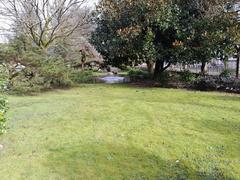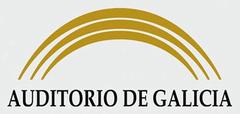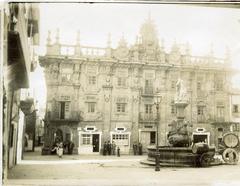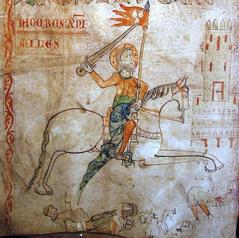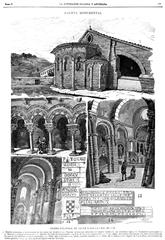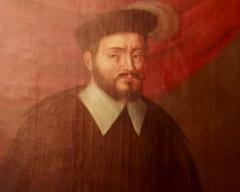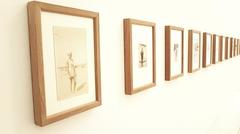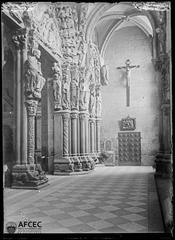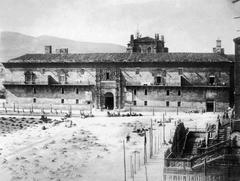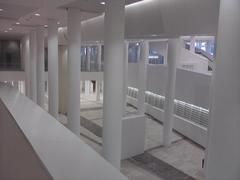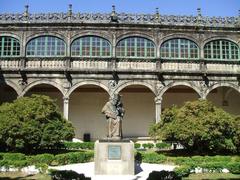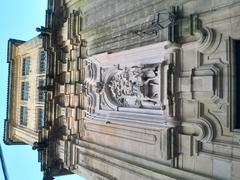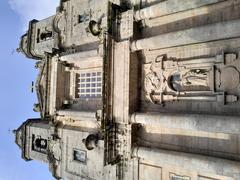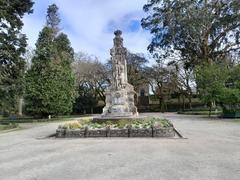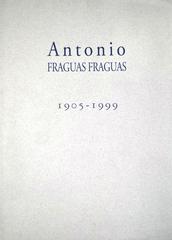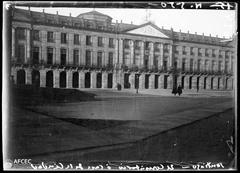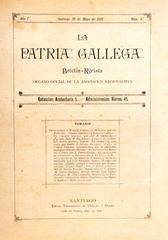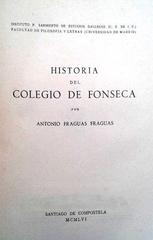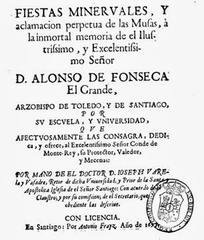Museum Of The Cathedral Of Santiago De Compostela
Museum of the Cathedral of Santiago de Compostela: Visiting Hours, Tickets, and Visitor Guide
Date: 04/07/2025
Introduction
The Museum of the Cathedral of Santiago de Compostela (Museo Catedralicio) is a cornerstone of Spain’s spiritual and artistic heritage, offering an unparalleled window into the history of Santiago de Compostela and the legendary Camino de Santiago pilgrimage. Nestled within the UNESCO-listed cathedral complex in Galicia, the museum brings together more than a millennium of devotion, architectural innovation, and cultural exchange. Whether you’re a pilgrim, a history enthusiast, or a traveler seeking insight into Spain’s profound religious traditions, this comprehensive guide delivers everything you need to plan and enjoy your visit—from historical highlights and must-see collections to up-to-date visiting hours, ticketing options, and travel tips (jwttravel.ie; whichmuseum.com).
Table of Contents
- Introduction
- Historical Overview
- The Museum’s Collections
- Visitor Experience
- Suggested Itinerary
- Nearby Attractions
- Frequently Asked Questions (FAQ)
- Visuals and Interactive Media
- Conclusion
- References and Further Reading
Historical Overview
Origins and Pilgrimage Heritage
The museum is intimately connected to the origins of Santiago de Compostela itself, springing from the 9th-century discovery of the relics of Saint James the Apostle. This event transformed the site into one of the world’s most important Christian pilgrimage destinations, the terminus of the Camino de Santiago (jwttravel.ie). The city and its cathedral flourished through the centuries, with the museum now serving as a guardian of their enduring legacy. The relics, the architecture, and the rituals continue to inspire millions of pilgrims and visitors each year (whichmuseum.com; walkthecamino.com).
Architectural Evolution
The present cathedral, begun in 1075 under Alfonso VI, is the largest Romanesque church in Europe, with later Gothic, Renaissance, and Baroque additions. The museum is woven into the cathedral’s historic spaces, including the Plateresque cloister, the Royal Pantheon, and the legendary Pórtico de la Gloria sculpted by Master Mateo in the 12th century (catedraldesantiago.es).
The Museum’s Collections
Archaeological Remains
In the museum’s archaeological hall, visitors encounter artifacts unearthed from beneath the cathedral: Roman necropolises, early Christian basilica foundations, and remnants of medieval fortifications. These reveal the deep historical roots of the site and the city’s evolution (veronikasadventure.com).
Sculpture and Decorative Arts
The museum preserves masterpieces from every artistic period in the cathedral’s history. Romanesque capitals, Gothic altarpieces, Renaissance friezes, and Baroque statuary reflect the religious and artistic ambitions of successive generations. Particularly notable are original elements from the cathedral’s construction and later enhancements (spain.info).
Tapestries and Textiles
A highlight is the collection of tapestries by Rubens, Goya, and Bayeu, with twelve Goya originals on display. These intricate works of textile art illuminate the wealth and influence of the cathedral and its chapter.
Liturgical Treasures
The Treasury and Chapel of Relics house precious chalices, reliquaries—including the celebrated silver reliquary of Saint James—and vestments spanning the Middle Ages to the Baroque. These items underscore the cathedral’s spiritual role and the generosity of its patrons (adventurebackpack.com).
Visitor Experience
Location and Access
The museum is located within the cathedral complex at Praza do Obradoiro, the center of Santiago’s historic old town (whichmuseum.co.uk). The entrance is on the western side of the cathedral, easily reached on foot, by public transportation, or as part of a guided tour (world-tourism.org). Pilgrims can follow the iconic scallop shell markers to the cathedral.
- Parking: Limited in the old town. The best option is Rua de Roma, about a 25–30 minute walk away (travelinfusedlife.com).
- Public Transport: Train and bus stations are within a 15–20 minute walk.
Visiting Hours and Tickets
- April to October: Daily, 9:00 am – 8:00 pm
- November to March: Hours may be reduced; check the official museum website for updates.
Ticket Types:
- Standard Ticket: Access to museum and cathedral interior.
- Upgraded Ticket: Includes the Portico of Glory (highly recommended).
- Guided Tours: In multiple languages, often led by art history specialists (visitargalicia.es).
Standard tickets do not include access to the cathedral’s decks or towers. Audio guides are available and enhance the self-guided experience (whichmuseum.co.uk).
Accessibility
While most of the museum is accessible, some historic areas feature stairs or uneven flooring, limiting access for visitors with reduced mobility. Wheelchair users should check accessibility in advance (world-tourism.org).
Guided and Self-Guided Tours
- Guided Tours: Official tours last 1.5–2 hours, often including exclusive access to the Portico of Glory (visitargalicia.es; world-tourism.org).
- Audio Guides: Available in several languages for self-paced exploration (whichmuseum.co.uk).
Facilities and Amenities
Restrooms, cloakrooms, and information desks are available within the complex. The cathedral gift shop offers religious items, books, and local souvenirs like the famous scallop shell and Tarta de Santiago (travelinfusedlife.com).
Best Times to Visit
- Peak Seasons: Spring to early autumn and Holy Years.
- Best Times: Early morning or late afternoon on weekdays.
- Crowds: Largest during pilgrimage festivals, weekends, and mass times (7:30 am, 9:30 am, 12:00 pm, 7:30 pm).
Photography and Conduct
Photography is permitted without flash or tripods. Silence and respectful attire are expected, especially in sacred spaces and during services (whichmuseum.co.uk).
Suggested Itinerary
- Enter via Praza do Obradoiro and check in.
- Explore main exhibition galleries and the Renaissance cloister.
- Visit the Royal Pantheon and Hall of Relics.
- Ascend to upper floors for panoramic views of the cathedral rooftops and square.
- Join a guided tour or use the audio guide for the Portico of Glory.
- Conclude your visit inside the cathedral nave.
Allow 1.5–2 hours, plus additional time for the Portico of Glory or special exhibitions (world-tourism.org).
Nearby Attractions
- Museum of Pilgrimages and Santiago
- Museo do Pobo Galego
- Galician Contemporary Art Centre (CGAC)
- Alameda Park (for panoramic cathedral views)
The tourist office at Rúa do Vilar, 63, provides maps and current information (selfguidedwalk.com).
Frequently Asked Questions (FAQ)
Q: What are the museum’s visiting hours?
A: April to October, daily 9:00 am–8:00 pm; reduced hours November to March. Confirm on the official website.
Q: How do I buy tickets?
A: Purchase online in advance or at the entrance; advance booking is recommended during peak periods.
Q: Is the Portico of Glory included in the standard ticket?
A: No, it requires an upgraded ticket or guided tour.
Q: Are audio guides available?
A: Yes, in several languages.
Q: Is the museum wheelchair accessible?
A: Some areas are, but historic sections may pose challenges; check in advance.
Q: Can I take photos?
A: Yes, without flash or tripods; respect guidelines in sacred areas.
Visuals and Interactive Media
- Feature high-resolution images of galleries, the Portico of Glory, and rooftop views (use descriptive alt text).
- Interactive maps of the museum layout and Praza do Obradoiro.
- Virtual tours and multimedia guides available on the museum website and the Audiala app.
Conclusion
The Museum of the Cathedral of Santiago de Compostela is much more than a collection of artifacts—it is a living cultural institution that bridges centuries of faith, artistry, and global pilgrimage. With its expertly curated exhibitions, panoramic views, and practical visitor amenities, the museum offers an enriching experience for all. Plan ahead for visiting hours and tickets, make use of audio guides or join a guided tour, and immerse yourself in the profound heritage of one of Europe’s most celebrated spiritual destinations.
Download the Audiala app for interactive audio guides, real-time updates, and curated itineraries. For more travel tips and updates, follow us on social media and explore our related articles on Santiago de Compostela’s history and the Camino de Santiago experience.
Summary and Final Tips
Maximize your visit by:
- Booking tickets in advance, especially during Holy Years.
- Arriving early or late to avoid crowds.
- Wearing comfortable shoes and respectful attire.
- Using audio guides or guided tours for deeper insight.
- Checking accessibility if needed.
- Exploring nearby museums and cultural sites for a full Santiago experience (catedraldesantiago.es; whichmuseum.com; visitargalicia.es; veronikasadventure.com; whichmuseum.co.uk).
References and Further Reading
- History of the Cathedral of Santiago de Compostela – JWT Travel
- Santiago Cathedral Museum – WhichMuseum
- Guided Visit to the Cathedral Museum – Veronika’s Adventure
- Cathedral Museum – WhichMuseum UK
- Catedral de Santiago Official Site
- Visit Ar Galicia – Guided Tours
